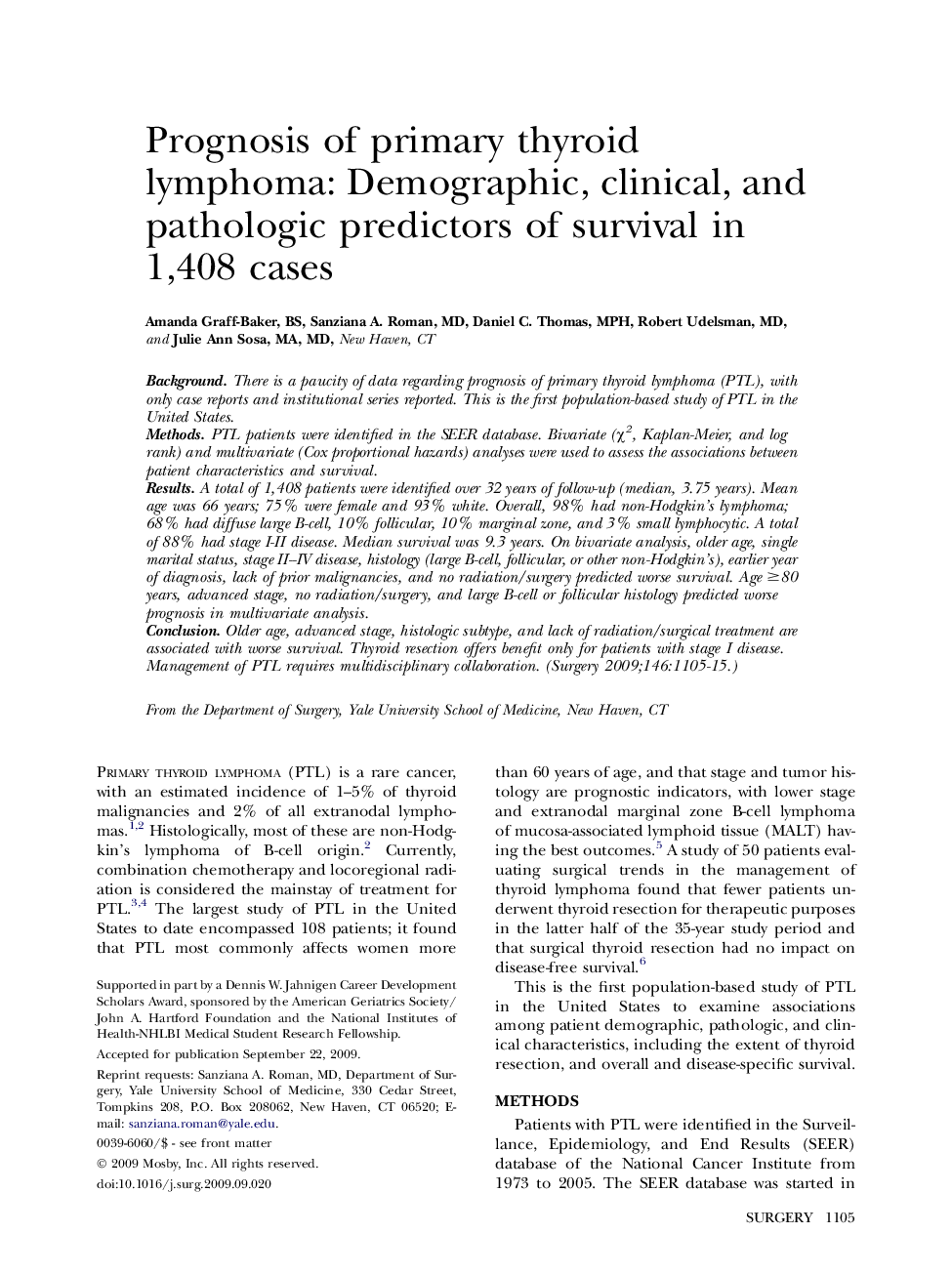| Article ID | Journal | Published Year | Pages | File Type |
|---|---|---|---|---|
| 4309112 | Surgery | 2009 | 11 Pages |
BackgroundThere is a paucity of data regarding prognosis of primary thyroid lymphoma (PTL), with only case reports and institutional series reported. This is the first population-based study of PTL in the United States.MethodsPTL patients were identified in the SEER database. Bivariate (χ2, Kaplan-Meier, and log rank) and multivariate (Cox proportional hazards) analyses were used to assess the associations between patient characteristics and survival.ResultsA total of 1,408 patients were identified over 32 years of follow-up (median, 3.75 years). Mean age was 66 years; 75% were female and 93% white. Overall, 98% had non-Hodgkin's lymphoma; 68% had diffuse large B-cell, 10% follicular, 10% marginal zone, and 3% small lymphocytic. A total of 88% had stage I-II disease. Median survival was 9.3 years. On bivariate analysis, older age, single marital status, stage II–IV disease, histology (large B-cell, follicular, or other non-Hodgkin's), earlier year of diagnosis, lack of prior malignancies, and no radiation/surgery predicted worse survival. Age ≥80 years, advanced stage, no radiation/surgery, and large B-cell or follicular histology predicted worse prognosis in multivariate analysis.ConclusionOlder age, advanced stage, histologic subtype, and lack of radiation/surgical treatment are associated with worse survival. Thyroid resection offers benefit only for patients with stage I disease. Management of PTL requires multidisciplinary collaboration.
